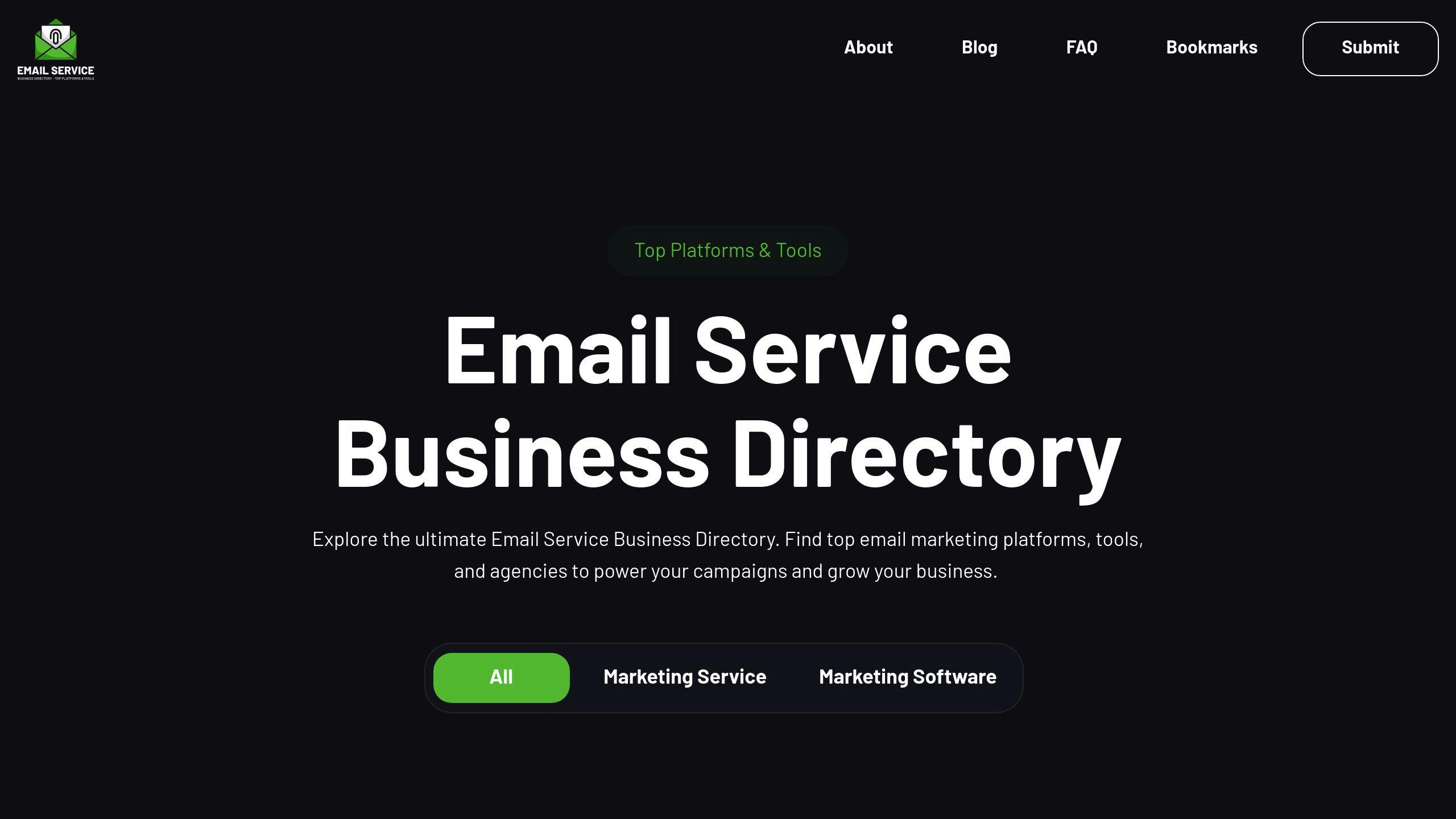A content calendar makes email marketing easier, more organized, and effective. It helps you plan emails around key dates, maintain consistent messaging, and target specific audience groups. By using a content calendar, you can avoid last-minute chaos, balance promotional and informational content, and track campaign performance.
Key Benefits of a Content Calendar:
- Stay Organized: Schedule emails with clear send dates and themes.
- Boost Engagement: Tailor content for different audience segments.
- Save Time: Plan ahead and streamline team collaboration.
- Improve Results: Analyze performance and refine strategies.
Quick Steps to Create One:
- Define your campaign goals.
- Segment your audience.
- Align campaigns with key dates.
- Organize and schedule content.
- Regularly review and update your calendar.
Start building your email content calendar to deliver better campaigns and connect with your audience effectively.
Understanding Content Calendars and Their Role in Email Marketing
What is a Content Calendar and Why Use One?
A content calendar is a centralized tool designed to help you schedule, organize, and plan email campaigns ahead of time. It helps you:
- Stay on schedule with consistent messaging.
- Coordinate efforts across your team seamlessly.
- Allocate resources where they’re needed most.
- Hold your team accountable for deliverables.
- Plan ahead for long-term campaigns.
How Content Calendars Streamline Email Campaigns
Content calendars give you a bird’s-eye view of your email marketing strategy by tracking key components like:
- Send Dates: Keep emails on time to maintain consistency.
- Content Themes: Organize your messaging around specific goals.
- Audience Segments: Target the right people with tailored content.
- Campaign Goals: Stay focused on what you want to achieve.
To make the most of your content calendar, align it with your team’s workflow and ensure everyone knows their responsibilities. Key areas to manage include:
- Campaign Tracking: Follow each email’s journey from idea to delivery.
- Resource Management: Assign tasks to team members and monitor progress.
- Performance Metrics: Analyze results to see what’s working.
- Content Balance: Mix promotional emails with informative or value-driven content.
Using a content calendar keeps your campaigns on track, relevant, and aligned with important dates and goals. Now, let’s dive into how to build one step by step.
How to create an email marketing calendar | 3 steps for a successful email marketing campaign
Steps to Create an Email Content Calendar
Creating an email content calendar takes thoughtful planning and organization. Here's how to build one that works effectively.
1. Define Your Campaign Goals
Start with clear, measurable goals. For instance, aim to boost open rates by 15% within three months. Make sure your email campaigns align with your overall marketing strategy. Regularly track metrics to refine your approach as needed.
2. Segment Your Audience
Break your audience into meaningful groups based on factors like:
- Purchase history and behavior
- Customer lifecycle stage
- Demographics and personal preferences
- Engagement levels (e.g., frequent vs. occasional users)
This segmentation ensures your emails resonate with each group.
3. Align Campaigns with Key Dates and Themes
Plan your campaigns around important dates and themes such as:
- Industry events or conferences
- Seasonal trends and holidays
- Product launches or updates
- Company milestones
These dates act as anchor points, helping you stay timely and relevant.
4. Organize and Schedule Your Content
Structure your calendar to include all the key details for each campaign:
| Calendar Component | Description | Purpose |
|---|---|---|
| Campaign Name | A unique name for each email series | Makes tracking easier |
| Send Date/Time | When the email will be sent | Helps optimize timing |
| Content Type | Newsletter, promotional, or educational | Ensures variety |
| Target Segment | The audience group for the email | Keeps messaging relevant |
| Status | Draft, in review, scheduled, or sent | Tracks campaign progress |
Use analytics to find the best times to send emails for higher engagement [1][3]. While consistency is important, leave room for last-minute opportunities or adjustments [2].
Once your calendar is set, keep it dynamic and open to changes to improve your campaign's effectiveness.
sbb-itb-6e7333f
Improving Campaigns with a Content Calendar
Once you've set up your content calendar, the next step is refining your strategy to get the best results.
Test and Adjust Campaign Timing
Using tools to figure out the best times to send emails can boost engagement significantly. Add a column in your content calendar to track testing schedules, results, and insights for future use.
Experiment with different send times - like mornings vs. afternoons or weekdays vs. weekends - and consider time zones to spot engagement trends. Record performance metrics directly in your calendar to guide future scheduling decisions.
Balance Promotional and Informative Content
Mixing up your content keeps your audience interested. A good rule of thumb is to aim for this ratio:
- 30% promotional content
- 40% educational content
- 30% relationship-building content
When planning, make sure your calendar includes content that appeals to customers at different stages of their journey. This approach keeps your audience engaged while supporting your marketing goals.
Review and Update the Calendar Regularly
Plan monthly check-ins to:
- Analyze how campaigns are performing and tweak your strategy.
- Update themes to reflect current trends.
- Spot campaigns that aren't working well and adjust timing or themes.
- Improve segmentation based on how subscribers are behaving.
Your calendar should be flexible enough to handle last-minute opportunities while sticking to your main plan. These regular reviews ensure your goals, audience targeting, and schedules stay on track with your evolving needs.
Use what you learn from performance data to create more focused, engaging content that connects with your audience. Regular updates keep your email marketing strategy effective and in tune with changing subscriber preferences.
Choosing Tools for Content Calendar Management
Picking the right tools for managing your email content calendar can make planning and running your marketing campaigns much smoother.
Email Service Business Directory: A Hub for Email Marketing Tools

The Email Service Business Directory is a handy resource for comparing tools that help with content calendar management. It lets you evaluate platforms based on features like automation, analytics, and how well they scale. When browsing the directory, look for tools that match the complexity of your campaigns and the size of your team.
Key Features to Look for in Content Calendar Tools
When deciding on a content calendar tool, focus on these important features:
- Integration Capabilities: Make sure the tool connects easily with your email service provider (ESP) and other marketing platforms. This avoids the hassle of manually transferring data.
- Collaboration Features: Tools with real-time editing, task assignments, version control, and team communication options can make teamwork a lot smoother.
- Analytics and Reporting: Since 81% of small businesses rely on email for customer acquisition [5], it's essential to have tools with performance tracking, visual calendar views, and custom fields. These features help you stay organized and measure your campaign's success.
- Scalability: Start with simple tools like spreadsheets if you're running a smaller operation. But as your campaigns grow in size and complexity, look for tools that can keep up.
Using the right tools can turn your content calendar into a powerful way to align your email campaigns with your marketing goals, ensuring smooth execution and measurable results.
Conclusion: Using a Content Calendar to Organize Email Marketing
A content calendar is more than just a planning tool - it’s a way to keep your email marketing campaigns organized and aligned with your goals. Businesses that use content calendars often experience improved coordination and stronger audience engagement [1][2].
By mapping out campaigns in advance, content calendars help ensure your messaging is timely, relevant, and tailored to different audience segments. Treat it as a living document, updating it regularly to stay in sync with shifting goals, market trends, and audience preferences [1][4].
Here’s how to get the most out of your content calendar:
- Track performance metrics: Use data to fine-tune your strategies.
- Stay flexible: Adjust campaign timing based on real-time insights.
- Review regularly: Make sure it aligns with your broader business objectives.
Using the right tools can make managing your content calendar much easier. The Email Service Business Directory is a great resource for finding platforms to streamline your workflow, whether you’re sending out a simple newsletter or running a complex campaign.
The key to success is consistency. A well-maintained content calendar helps you stay organized and deliver campaigns that truly connect with your audience, driving both engagement and growth.
FAQs
Now that we've gone over how to create and manage a content calendar, let’s tackle some common questions to fine-tune your process.
How do I create a content calendar for email marketing?
Here’s a simple approach to building an email marketing calendar:
- Plan Strategically: Define your campaign goals and metrics, highlight key dates or events, and ensure your content aligns with overall marketing objectives [1][3].
- Organize Your Team: Assign roles for content creation, design, and review. Set clear deadlines and workflows to keep everything on track.
- Segment Your Audience: Group your subscribers by behavior, engagement levels, or preferences to tailor your messaging effectively.
What tools can help manage an email content calendar?
Here are some useful tools to consider:
- ClickUp: Great for collaboration, task management, and timeline views.
- Google Sheets: A straightforward option for organizing and sharing plans.
- Email Platforms: Many specialized platforms offer automation and analytics to streamline your email campaigns.
For more options, you can check out the Email Service Business Directory to find tools that suit your needs.
How often should I update my content calendar?
Regular updates are key:
- Weekly: Check upcoming campaigns and make necessary adjustments.
- Monthly or Quarterly: Review campaign results and tweak your strategy based on performance.
How do I balance promotional and informative content?
Aim for this content mix:
- 60% Educational Content: Focus on providing value and insights.
- 30% Promotional Messages: Highlight your products or services.
- 10% Company Updates: Share news or behind-the-scenes content.
This ratio keeps your audience engaged while supporting your business goals [1][2].


